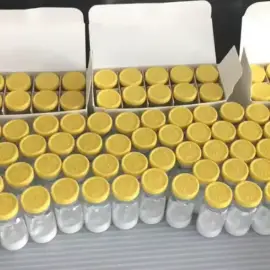-
Categories
-
Pharmaceutical Intermediates
-
Active Pharmaceutical Ingredients
-
Food Additives
- Industrial Coatings
- Agrochemicals
- Dyes and Pigments
- Surfactant
- Flavors and Fragrances
- Chemical Reagents
- Catalyst and Auxiliary
- Natural Products
- Inorganic Chemistry
-
Organic Chemistry
-
Biochemical Engineering
- Analytical Chemistry
-
Cosmetic Ingredient
- Water Treatment Chemical
-
Pharmaceutical Intermediates
Promotion
ECHEMI Mall
Wholesale
Weekly Price
Exhibition
News
-
Trade Service
After the chemical heating and refrigeration cycle system has been used for a long time, in addition to paying attention to maintenance, it also needs to pay more attention to cleaning, otherwise it will directly affect the normal performance of the equipment and the life of the equipment, so how should it be cleaned
?
1.
Before cleaning, first discharge part of the old oil, use the heating system to cool the heat transfer oil in the system to about 60, and replace the failed instruments (pressure gauge, temperature gauge) in the system.
Take samples for comparative analysis before and after cleaning
.
2.
Add the cleaning agent of the chemical heating and refrigeration cycle system into the system at one time according to the capacity of the system to make the system full, reach the low line of the expansion tank, and ensure that the cleaning agent fully enters the pipeline.
The filling process should be carried out slowly to avoid hot oil.
The system pressure fluctuates violently when encountering normal temperature
.
3.
Turn on the oil pump, circulate at low temperature, and the temperature can be raised only after the pressure gauge is stable.
During the heating process, pay attention to the heating rate not too fast.
The stability of the pressure gauge shall prevail, and it will take about 3-5 hours to stabilize
.
4.
When the cleaning is nearing the end, it is recommended to close the valves of some branch oil circuits in order to accelerate the flow rate of the cleaning agent in other oil circuits and keep it for a period of time
.
Then open the auxiliary exhaust valve for a period of time to clean the tank
.
5.
After the cleaning is completed, reduce the oil temperature to 40-60°C, and drain the heat transfer oil and cleaning agent.
At this time, sample the heat transfer oil discharged from the system again for comparative analysis of oil samples before and after cleaning
.
?
1.
Before cleaning, first discharge part of the old oil, use the heating system to cool the heat transfer oil in the system to about 60, and replace the failed instruments (pressure gauge, temperature gauge) in the system.
Take samples for comparative analysis before and after cleaning
.
2.
Add the cleaning agent of the chemical heating and refrigeration cycle system into the system at one time according to the capacity of the system to make the system full, reach the low line of the expansion tank, and ensure that the cleaning agent fully enters the pipeline.
The filling process should be carried out slowly to avoid hot oil.
The system pressure fluctuates violently when encountering normal temperature
.
3.
Turn on the oil pump, circulate at low temperature, and the temperature can be raised only after the pressure gauge is stable.
During the heating process, pay attention to the heating rate not too fast.
The stability of the pressure gauge shall prevail, and it will take about 3-5 hours to stabilize
.
4.
When the cleaning is nearing the end, it is recommended to close the valves of some branch oil circuits in order to accelerate the flow rate of the cleaning agent in other oil circuits and keep it for a period of time
.
Then open the auxiliary exhaust valve for a period of time to clean the tank
.
5.
After the cleaning is completed, reduce the oil temperature to 40-60°C, and drain the heat transfer oil and cleaning agent.
At this time, sample the heat transfer oil discharged from the system again for comparative analysis of oil samples before and after cleaning
.







